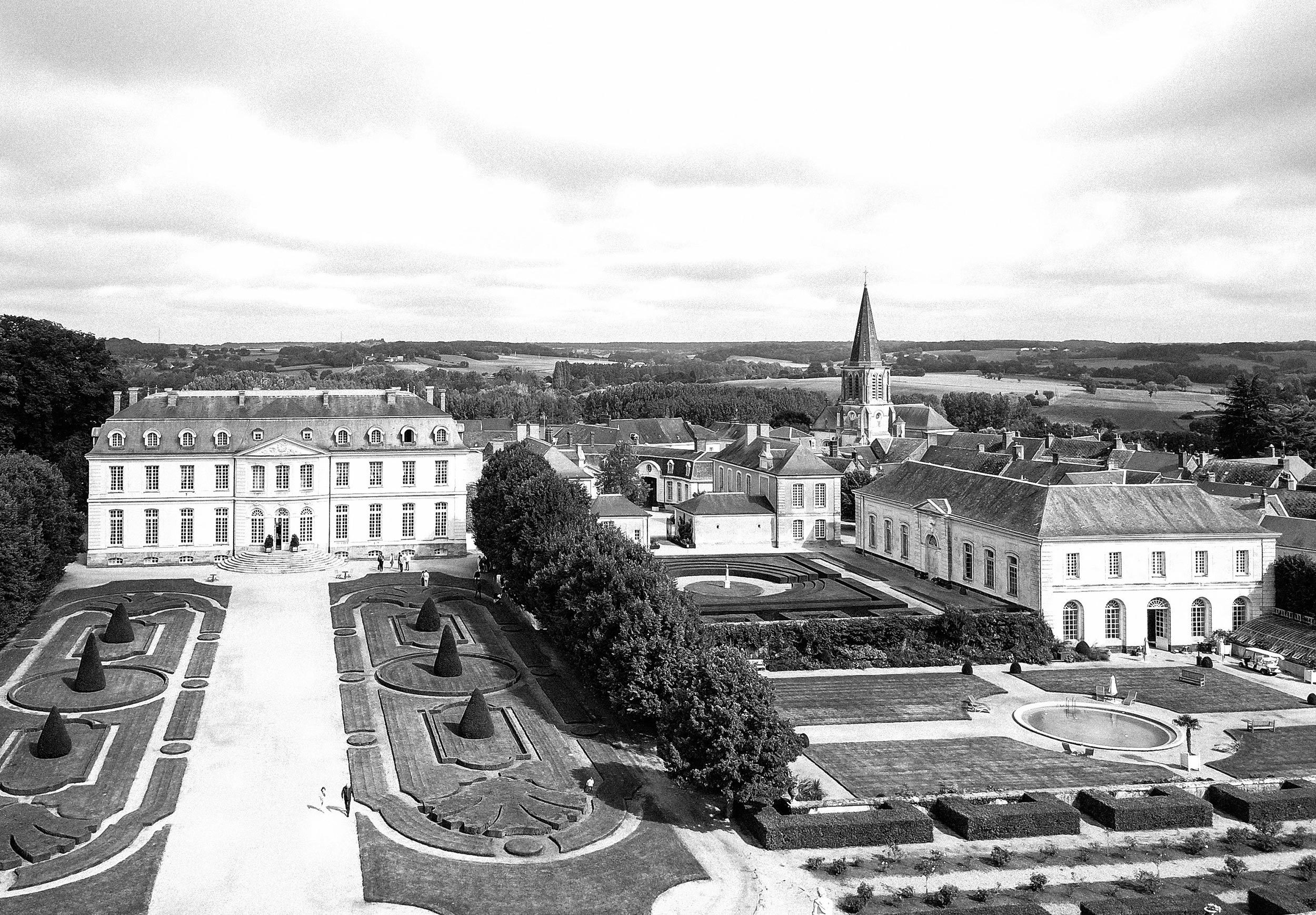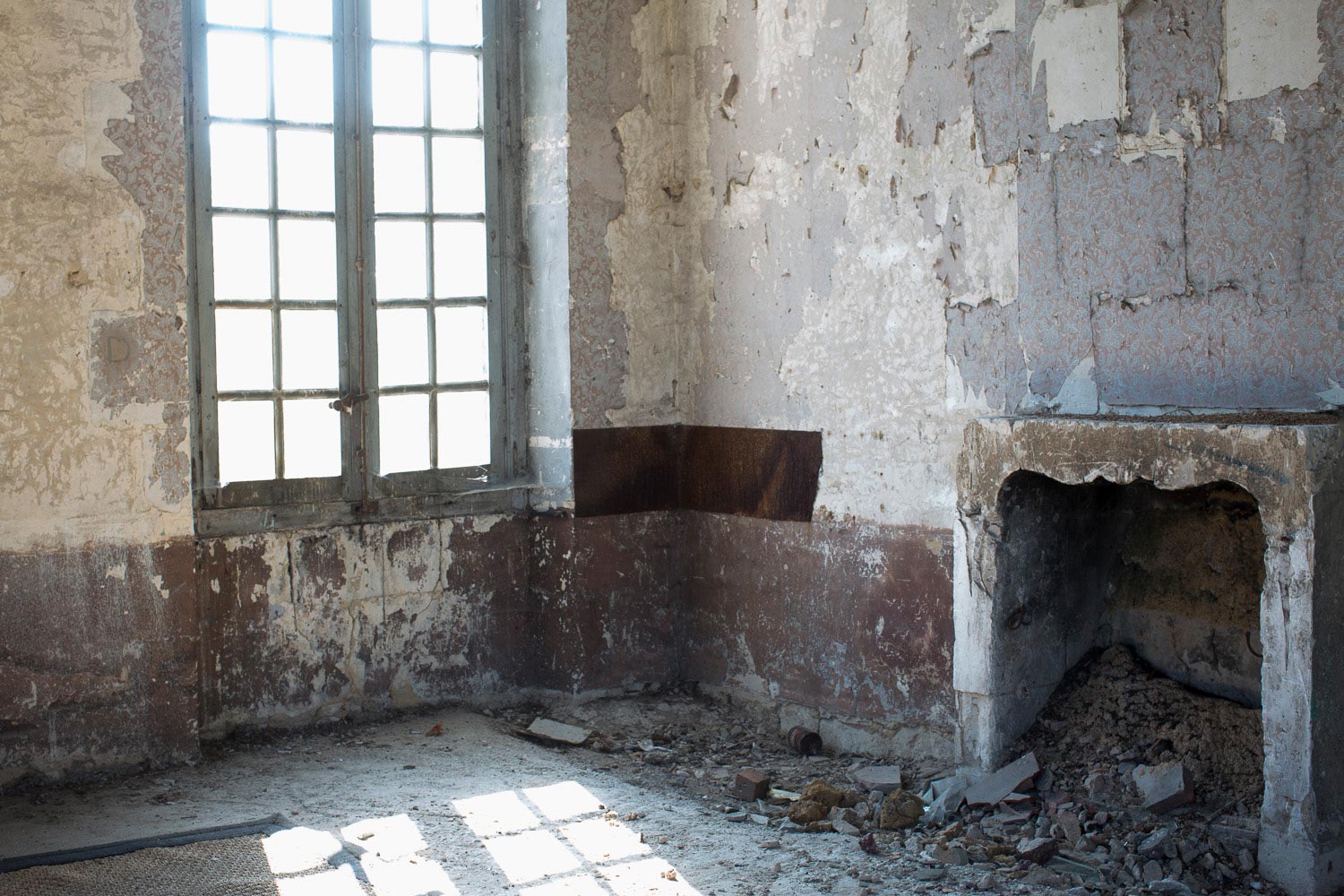In 1709 Jacques Pineau de Viennay III was born – the first son of Baron Jacques Pineau de Viennay II and Marguerite de Gennes – and heir to the family’s estate. In 1718, Pineau de Viennay II, using his wife’s fortune, purchased Lucé and Pruillé, including an “old walled castle of high walls”, ponds, meadows, farms, and mills. This purchase was an elevation in society for the Pineau de Viennay family, as well as a source of income from cloth, crops, poultry, butter and wax.
Jacques Pineau de Viennay III was a prodigal son with political aspirations and became a trusted confidant of King Louis XV. By the mid-eighteenth century Baron Pineau de Viennay III, referred to as the Baron de Lucé, was responsible for the administration of all of Eastern France. In 1750, the Baron decided to replace the heavily fortified medieval castle in the village of Le Grand-Lucé with a modern palace. Mathieu de Bayeux, an architect and engineer renowned for having designed and engineered the oldest and most famous bridge in Tours, the Pont Wilson on the Loire River, was engaged to design a truly state-of-the-art structure. Baron Jacques Pineau de Viennay was passionate about design and architecture – demanding the most modern ideas for his new château. The Baron embraced the new ideas of the Age of Enlightenment and viewed the feudal concepts and medieval design as obsolete. Work began in 1760 and by 1764, the forty-five thousand square foot chateau and supporting buildings were completed.

Designed on a north-south axis, the plans for the new chateau embraced the precision and symmetry of the Neoclassical Movement. Baron Pineau de Viennay’s summer palace, the Château du Grand-Lucé, is revered by the Republic of France as one of the finest remaining examples of French Neoclassical architecture. Jacques Pineau de Viennay demanded the finest and the most au courant in furnishings and finishes. Murals depicting a fanciful life in Asia in the chinoiserie style were painted on canvas covered walls in the now aptly named Salon Chinois, the Baron’s private drawing room. These painted walls, by the artist Jean-Baptiste Pillement, 1728 -1808, are today found only in two places — the Petit Trianon, Marie Antoinette’s private garden palace at Versailles, and at the Château du Grand-Lucé. Smaller paintings by Pillement, can be found at several museums throughout the world, including the Louvre in Paris and the National Gallery in Washington DC.
Château du Grand-Lucé passed at the Baron’s death to his daughter, Louise Pineau de Viennay. Mademoiselle Pineau de Viennay was an aristocratic supporter of the arts and hosted erudite philosophers and artists during the Age of Enlightenment including Diderot, Voltaire, Rousseau, Mozart and Grimm. During World War I, while still in the Pineau de Viennay family, the Château was used as a hospital for wounded British Officers. During the second world war, shelter and protection were provided to paintings belonging to the Louvre – where they were hidden in a secret cache under the stage of the theater built in the former stables.

The Château eventually passed to the French Government, who completed an incredible restoration of the gardens and used buildings onsite as government tourism offices. In 2003, the Château was sold by the government to American interior designer Timothy Corrigan. Much of the Château was in its original state and Corrigan masterfully renovated the forty-five thousand square foot chateau for use as his private residence.
With its transfer to new ownership in 2017, the Hotel Château has been redesigned and reimagined to fulfill the purpose for which it was originally intended: to host and inspire the most discerning traveler. To surround its guests with the finest in furnishings and finishes, in art and beauty. We have exacted, with the same precision as Baron Jacques Pineau de Viennay, every detail, resulting in modern splendor that spans centuries – a restrained opulent chic hotel suited for the new noble.


